Discover the art of making pulao with our comprehensive guide, featuring rice cooker recipes, preparation tips, and variations. Learn how to cook this fragrant South Asian rice dish effortlessly, combining aromatic spices, fresh ingredients, and essential cooking techniques for delicious results. Perfect for everyday meals or special occasions!
How to Pulao in Rice Cooker with Recipes: A Comprehensive Guide to Preparation
Pulao is a fragrant rice dish made by cooking basmati rice with spices and vegetables or meat in one pot. For rice cooker preparation, sauté spices and ingredients, add soaked rice and water, and cook until done. Fluff and serve hot, garnished with fresh herbs.
Introduction
Pulao, a cherished rice dish rooted in South Asian culinary traditions, represents a harmonious blend of fragrant basmati rice, aromatic spices, and a variety of ingredients such as vegetables or meat. Known for its simplicity and versatility, pulao, also referred to as pilaf, is a one-pot meal that has gained widespread popularity across India, Pakistan, Bangladesh, and beyond. Its ease of preparation and adaptability make it a favored choice for both everyday meals and festive occasions.
This article provides a detailed exploration of pulao, encompassing its definition, historical and cultural significance, distinctions from biryani, preparation methods, recipes, and specific instructions for using a rice cooker. It aims to equip readers with a thorough understanding of pulao, enabling them to prepare this flavorful dish with confidence.
Definition
Pulao is a rice-based dish characterized by the cooking of fragrant basmati rice with whole spices, herbs, and additional ingredients such as vegetables or meat in a single pot. The preparation typically involves the absorption method, where rice is cooked in a measured amount of liquid, allowing flavors to meld seamlessly.
According to culinary sources, pulao is a staple in South Asian cuisines, often served with accompaniments like yogurt raita or curry to enhance its flavor profile. The dish’s versatility allows for numerous variations, including vegetable pulao, chicken pulao, and regional specialties like Kashmiri or Zarda pulao, each tailored to local tastes and traditions.
Historical and Cultural Significance
The origins of pulao trace back to the Abbasid Caliphate, where rice-cooking techniques spread across a vast region from South Asia to Spain, influencing dishes like Spanish paella and South Asian biryani. The term “pulao” derives from the Persian word pilāv, reflecting its historical roots in Central Asia.
In South Asia, pulao has evolved into a beloved dish, integral to both daily meals and celebratory feasts. Its cultural significance is evident in its presence on party and buffet menus, often paired with yogurt raita or kurma, symbolizing hospitality and communal dining.
Distinction from Biryani
Pulao and biryani, while both rice-based dishes, differ significantly in preparation and complexity:
| Aspect | Pulao | Biryani |
|---|---|---|
| Preparation Method | One-pot absorption method, cooking all ingredients together 🍚 | Layering method, with partially cooked rice and meat/vegetables layered and finished together 🍛 |
| Spice Intensity | Milder, with fewer spices 🌶️ | Richer, with a complex blend of spices 🌶️🌶️ |
| Cooking Time | Quicker, typically 20-30 minutes ⏳ | Longer, due to layered cooking process ⏰ |
| Flavor Profile | Subtle, harmonious flavors 🥕 | Bold, layered flavors 🍗 |
These distinctions highlight pulao’s simplicity and accessibility, making it an ideal choice for quick, flavorful meals.
Core Functionalities in Preparation
The preparation of pulao involves several key steps to ensure a flavorful and well-textured dish:
- Rice Selection and Preparation: Basmati rice is preferred for its long, non-sticky grains. Rinsing and soaking the rice for 20-30 minutes removes excess starch, ensuring fluffy results.
- Sautéing Spices and Ingredients: Whole spices like bay leaf, cinnamon, cloves, and cardamom are sautéed in ghee or oil to release their aromas, followed by vegetables or meat to build flavor.
- Cooking Process: Rice is added to the sautéed mixture, coated with spices, and cooked with a precise water ratio (typically 1:2 for rice to water) to achieve non-sticky grains.
- Garnishing: Fresh herbs like coriander or mint are added post-cooking to enhance freshness and presentation.
These steps ensure a balanced and aromatic pulao, adaptable to various cooking methods, including stovetop, pressure cooker, and rice cooker.
Vegetable Pulao Recipe
This basic vegetable pulao recipe is designed for stovetop or pressure cooker preparation, offering a quick and flavorful meal suitable for everyday dining or gatherings.
Ingredients:
- 1 cup basmati rice 🍚
- 2 cups water 💧
- 1 medium onion, thinly sliced 🧅
- 1 carrot, diced 🥕
- ½ cup green peas 🌱
- ½ cup green beans, chopped 🫛
- 2 tablespoons ghee or vegetable oil 🫒
- 1 bay leaf 🍃
- 1-inch cinnamon stick 🌿
- 2-3 cloves
- 2-3 green cardamoms
- 1 teaspoon cumin seeds
- 1 teaspoon ginger-garlic paste 🧄
- 2 green chilies, slit 🌶️
- Salt to taste 🧂
- Fresh coriander leaves for garnish 🌿
Preparation Instructions:
- Rinse the basmati rice under running water until the water runs clear, then soak for 30 minutes. Drain and set aside.
- Heat ghee or oil in a large pan or pressure cooker over medium heat. Add bay leaf, cinnamon, cloves, cardamoms, and cumin seeds, sautéing until fragrant (about 30 seconds).
- Add sliced onion and cook until golden brown, approximately 2-3 minutes.
- Stir in ginger-garlic paste and green chilies, cooking for 1 minute.
- Add carrots, peas, and green beans, sautéing for 2-3 minutes to soften.
- Add the soaked rice, stirring gently to coat with spices.
- Pour in 2 cups of water and add salt to taste. Bring to a boil.
- For stovetop: Cover, reduce heat to low, and simmer for 15-20 minutes until the rice is cooked and water is absorbed. For pressure cooker: Cook for 1 whistle on medium heat, then let the pressure release naturally.
- Fluff the rice with a fork and garnish with fresh coriander leaves. Serve hot with yogurt raita or curry.
Preparation Time: Approximately 30 minutes.
Serving Size: Serves 2-3.
Pulao in a Rice Cooker
Using a rice cooker simplifies pulao preparation, ensuring consistent results with minimal effort. The method varies depending on whether the rice cooker has a sauté function.
For Rice Cookers with Sauté Function
Ingredients: Same as the basic vegetable pulao recipe above.
Preparation Instructions:
- Set the rice cooker to sauté or cook mode and heat 2 tablespoons of ghee or oil.
- Add bay leaf, cinnamon, cloves, cardamoms, and cumin seeds, sautéing until fragrant (about 30 seconds).
- Add sliced onion and cook until golden brown, approximately 2-3 minutes.
- Stir in ginger-garlic paste and green chilies, cooking for 1 minute.
- Add carrots, peas, and green beans, sautéing for 2-3 minutes.
- Add the soaked and drained basmati rice, stirring to coat with spices.
- Pour in 2 cups of water and add salt to taste. Switch to the rice cooking mode.
- Once cooking is complete, let the pulao rest for 5 minutes, then fluff with a fork and garnish with coriander leaves.
Preparation Time: Approximately 25 minutes.
Serving Size: Serves 2-3.
For Basic Rice Cookers without Sauté Function
Ingredients: Same as the basic vegetable pulao recipe above.
Preparation Instructions:
- In a separate pan on the stovetop, heat 2 tablespoons of ghee or oil over medium heat.
- Add bay leaf, cinnamon, cloves, cardamoms, and cumin seeds, sautéing until fragrant (about 30 seconds).
- Add sliced onion and cook until golden brown, approximately 2-3 minutes.
- Stir in ginger-garlic paste and green chilies, cooking for 1 minute.
- Add carrots, peas, and green beans, sautéing for 2-3 minutes.
- Transfer the mixture to the rice cooker.
- Add the soaked and drained basmati rice, 2 cups of water, and salt to taste. Stir to combine.
- Close the rice cooker lid and set to the standard cooking mode.
- Once cooking is complete, let the pulao rest for 5 minutes, then fluff with a fork and garnish with coriander leaves.
Preparation Time: Approximately 30 minutes (including stovetop sautéing).
Serving Size: Serves 2-3.
Variations of Pulao
Pulao’s versatility allows for numerous variations to suit different tastes and dietary preferences:
- Chicken Pulao 🍗
- Description: A non-vegetarian version incorporating marinated chicken for added protein and flavor.
- Modification: Add ½ pound of diced chicken breast after sautéing onions, cooking until lightly browned before adding rice and water. Use chicken stock instead of water for richer flavor.
- Serving Suggestion: Pair with cucumber raita for a cooling contrast.
- Matar Pulao (Peas Pulao) 🌱
- Description: A simple variation focusing on green peas as the primary ingredient, offering a sweet and mild flavor.
- Modification: Replace mixed vegetables with 1 cup of green peas, following the same preparation steps.
- Serving Suggestion: Serve with paneer curry or dal for a hearty meal.
- Coconut Milk Pulao 🥥
- Description: A creamy, aromatic version using coconut milk for a tropical twist.
- Modification: Replace 1 cup of water with coconut milk and add a handful of cashews for texture.
- Serving Suggestion: Pair with a spicy curry to balance the creaminess.
Serving Suggestions
Pulao is a versatile dish that pairs well with a variety of accompaniments to enhance the dining experience:
- Yogurt Raita 🥛: A cooling side dish made with yogurt, cucumbers, mint, and spices, balancing the pulao’s warmth.
- Pickle 🥒: Indian pickles, such as mango or lime, add a tangy kick to complement the rice.
- Papad 🥟: Crispy lentil wafers provide a crunchy contrast to the soft rice texture.
- Kurma or Shorba 🍛: Flavorful vegetable or meat-based gravies enhance the meal’s richness.
- Salad 🥗: A simple cucumber and tomato salad with lemon dressing adds freshness.
These accompaniments create a balanced and flavorful meal, suitable for various occasions.
Nutritional Benefits
Pulao, particularly vegetable pulao, offers nutritional benefits due to its diverse ingredients. Basmati rice provides carbohydrates for energy, while vegetables like carrots, peas, and beans contribute vitamins, minerals, and fiber. The use of whole spices adds antioxidants, and ghee provides healthy fats in moderation. A single serving of vegetable pulao (approximately 1 cup) contains roughly 200-250 calories, depending on the ingredients, making it a balanced meal option.
Practical Tips for Success
To ensure a successful pulao preparation, consider the following:
- Rice Selection: Use high-quality basmati rice for its long, non-sticky grains and aromatic flavor. Aged basmati or varieties like Seeraga Samba enhance texture (Indian Veggie Delight, 2019).
- Soaking: Soak rice for 20-30 minutes to remove excess starch, ensuring fluffy, separate grains.
- Water Ratio: Maintain a 1:2 rice-to-water ratio for stovetop or rice cooker preparation, adjusting slightly based on appliance instructions.
- Spice Balance: Adjust spice quantities to suit taste preferences, ensuring a harmonious flavor profile.
- Freshness: Use fresh vegetables and herbs to enhance flavor and presentation.
- Storage: Store leftover pulao in an airtight container in the refrigerator for up to a week. Reheat in a microwave or stovetop with a splash of water to restore moisture.
Challenges and Considerations
While pulao is relatively simple to prepare, several considerations ensure optimal results:
- Rice Texture: Overcooking or insufficient soaking can result in sticky rice, requiring careful attention to water ratios and cooking times.
- Spice Overload: Excessive spices can overpower the dish, necessitating moderation and taste testing.
- Rice Cooker Variability: Basic rice cookers may require stovetop sautéing, adding an extra step to the process.
- Dietary Preferences: Ensure ingredients align with dietary needs, such as omitting onions and garlic for Jain diets or using vegetable stock for vegan variations.
Addressing these considerations involves careful preparation and adaptation to specific equipment and preferences.
Conclusion
Pulao represents a versatile and flavorful rice dish that combines simplicity with rich culinary tradition. Its one-pot preparation method, utilizing fragrant basmati rice, whole spices, and a variety of ingredients, makes it an accessible and crowd-pleasing option for diverse occasions. By mastering stovetop, pressure cooker, or rice cooker methods, individuals can prepare pulao with ease, tailoring recipes to suit dietary preferences and taste profiles.
The integration of cultural accompaniments and practical tips ensures a delightful dining experience. As a staple of South Asian cuisine, pulao continues to captivate food enthusiasts, offering a harmonious blend of flavors and aromas that elevate any meal.
References
- Wikipedia: Pilaf
- Indian Healthy Recipes: Pulao Recipe
- Veg Recipes of India: Vegetable Pulao Recipe
- Fun Food Frolic: Rice Cooker Matar Pulao
- Greedy Panda: Easy Pilau Rice in Your Rice Cooker
- NDTV Food: Difference Between Pulao and Biryani
- Indian Veggie Delight: Vegetable Pulao in Instant Pot
Note: This article is for informational purposes only and not professional advice. Verify ingredient quantities and cooking times based on specific equipment and preferences before preparing pulao.


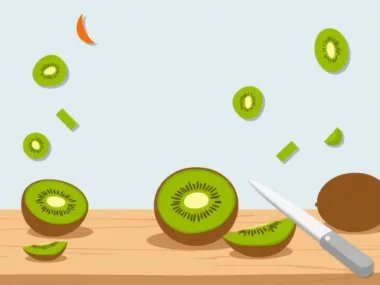
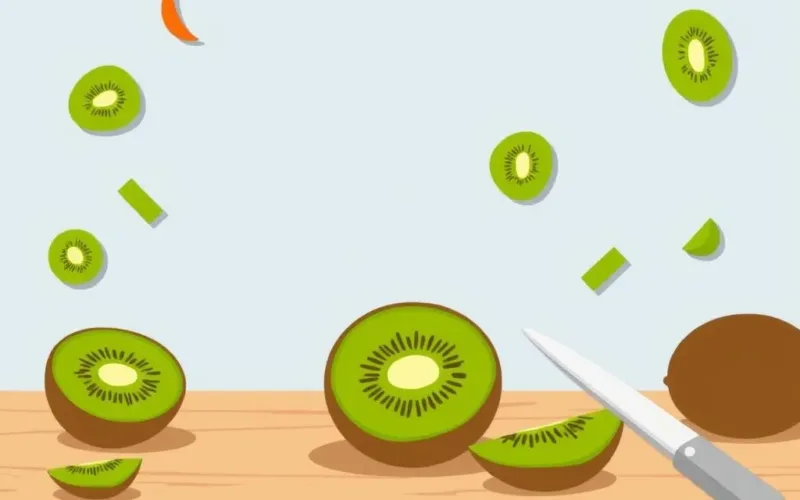
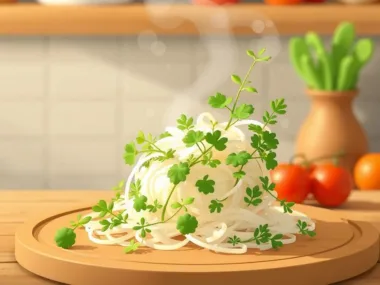

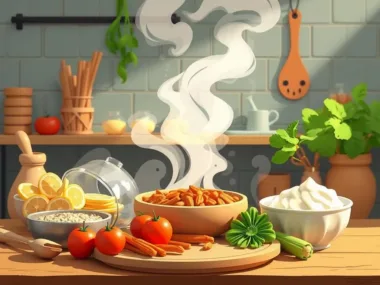



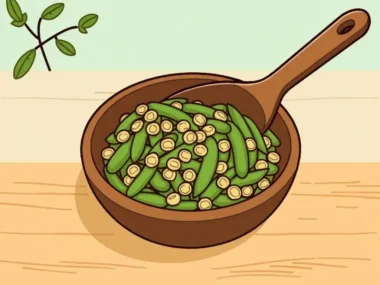
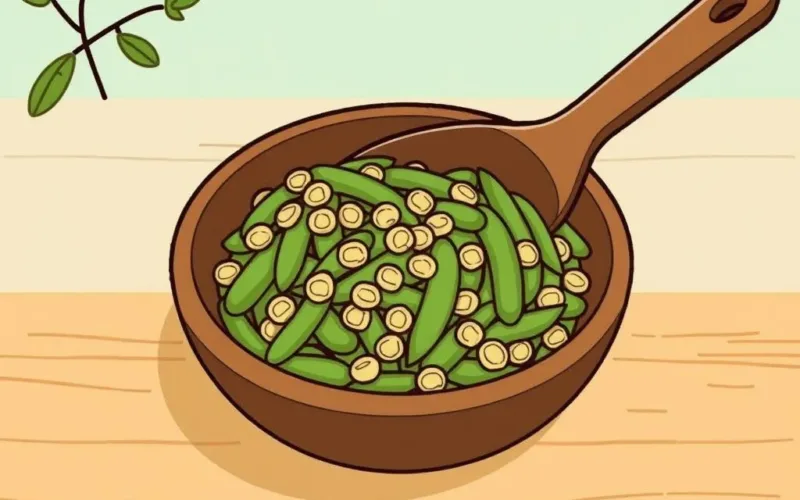

Leave a Reply